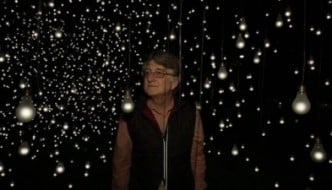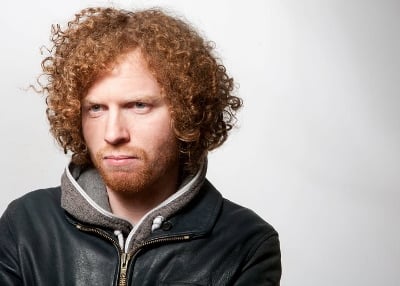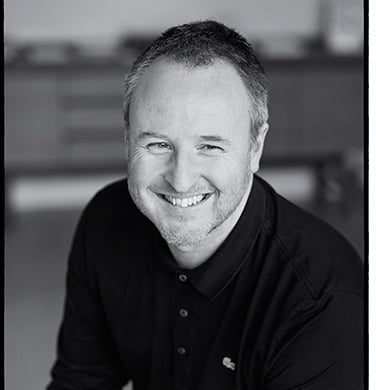Artist in the Spotlight: Ebony Andrews
January 28, 2015
[Of Misery and Privilege, courtesy of Ebony Andrews]
There are many hidden creative gems working amongst the Leeds Art Scene. ‘Artist in the Spotlight’ is TSOTA’s attempt to shine a light on some of them. You may or may not have come across them directly, but here at TSOTA we hope to gather them together and give you their lives in few words. You can then decide if you want to know more…
This week’s Artist in the Spotlight is: Ebony Andrews
Location: Leeds
Currently working on:…Of Misery and Privilege, Wishbone Gallery, Grassington 17th January- 1st March
In a nutshell? I enjoy materials, materials come first.
In regard to what the work is ‘about’, it largely concerns animals, and more broadly the representation of wildlife and the environment, often with a bit of commodity culture critique thrown in for good measure!
THEN…
TSOTA: What initially attracted you to taxidermy?
EA: Many taxidermists, professional or amateur, would describe traditional taxidermy practices as an art form. It is certainly a form of sculpture, and as a practice it borrows substantially from textile as well as moulding and casting techniques, amongst others. Concerning the use of taxidermy in fine art practice, I originally chose it as a medium to convey a series of ideas; in the sense that I am an artist / craftsperson / maker, who sometimes uses taxidermy to communicate certain ideas, not a taxidermist who also happens to make art.
Animals are a big draw for me and I have a real passion for the natural world. Taxidermy happens to be another mode of representing animals, but it is unique in that it enables both the representation and re-presentation of animal forms. Equally, in a museological sense, discrete taxidermy mounts simultaneously represent unique individuals as well as entire species. In these respects I find the multiplicity of taxidermy fascinating, and its histories; the good, the bad, and the ugly, are pretty colourful too…
I fully recognise that I am far from unique in using taxidermy techniques in art. There has been a real renaissance in this area in the last decade, led particularly by young female artists such as Polly Morgan and Claire Morgan, to name just a couple. That said, it is important to remember that Robert Rauschenberg used taxidermy in his sculpture Monogram back in the 1950s, and in that regard we aren’t doing anything overly radical.
TSOTA: Since you started producing taxidermy art how has your work developed?
EA: That my works will be about animals, nature, or the environment, largely just comes as a given now; but in terms of the specific themes being addressed and interpreted through the works, these have moved away somewhat from being a little heavy handed, especially on the political and ethical side, although I still like to play around with and subvert value structures.
After I graduated from my undergraduate degree in Fine Art 10 years ago, humour was also more common in my work than perhaps it is today. Nowadays I find myself increasingly more interested in materials and overall aesthetics. Perhaps this is, in part, a product of my more recent museological career coming out, but I also use more found objects and have a more developed sense of allowing recontextualised objects to speak for themselves. The objet trouvé approach, combined with other bits and bobs, can lead to works which seem rather obscure, but I now don’t feel as pressured to explain or somehow ‘justify’ them on conceptual terms, although there is, of course, a time and a place for that too. I’d also like to say that I’m much better at taxidermy than I used to be, and in some ways my techniques have improved, but in others I still get frustrated and have to go back to the drawing board.

[Feather painting, courtesy of Ebony Andrews]
.
TSOTA: What influence did working as a Taxidermy Assistant for National Museums Scotland and with the taxidermy collection at Leeds Discovery Centre have on what you create?
EA: Both of these experiences influenced me in numerous ways, but perhaps the most significant thing about having the privilege of working in both of these brilliant institutions was how much I learned in relation to the interconnectedness of theory and practice. At National Museums Scotland I learnt, on a very technical level, how to prepare zoological specimens for both display and research purposes. Equally, at Leeds Discovery Centre, I further developed my knowledge of specimen conservation as well as learning some restoration practices alongside broader, more general approaches to collections care. At the same time, and certainly once I began my MA, and later my PhD in museology, I began to understand a lot more how ‘hands on’ museum work was heavily informed and shaped by theory, and vice versa.
As a craftsperson or maker, as well as a museum and art historian, this balance of theory and practice is what underpins my work. I use and develop the technical and practical side all the time, but equally, the theory helps inform and shape my decisions, particularly in regard to best practice and ethics; but also when thinking more philosophically and epistemologically about art, museums and museology as a discipline.
NOW…
TSOTA: Are there any types of animals you find particularly interesting or inspiring to work with?
EA: Working in the zoology department of a national museum enabled me to work on some incredible rare and protected species which were sourced largely from zoos and wildlife parks. With the correct tools, I had no problem skinning animals much larger than myself. At that time, big cats such as tigers were my favourites. I liked the shape of them, and their skins tanned and dressed with excellent results. One of the real joys of my work at the museum was that it was good to know that following the deaths of these amazing creatures, their physical remains were being put to good use; to further scientific research, and ultimately to contribute to the conservation of natural biodiversity in the wild.
In regard to dislikes, with common British wildlife such as foxes, it’s not so much the animals themselves, but what comes along with them that I dislike, specifically ticks and other parasites. There are ways of dealing with these things, but they must always be considered as part of safe practice. I do recall that when I worked for National Museums Scotland I sometimes avoided working on primates when there were alternative jobs to be done. This was because once skinned, primates are disturbingly similar to humans. Some, such as gorillas, have BO and, well, you probably get the picture!
Unless I was to work for a big museum again, my big exotics days are most likely behind me now, but I think it is important to note that the beauty of common British wildlife should never be overlooked. Even birds bred for field sports and eating, such as pheasants and grouse, can be visually stunning and a joy to work on. The added benefit of working with these kinds of animals is that all of the animal can be used; the body for meat, and the skin for taxidermy. Ethically, I think this is the best possible outcome.

[Taxidermy Pheasant, courtesy of Ebony Andrews]
TSOTA: What would you say to someone who was concerned about where the animals that you work with come from?
EA: It’s great when people are able to attend previews of my work because it provides a valuable opportunity to discuss my practice with them, and to answer questions such as ‘where do all the animals come from?’ Indeed, in the conservation conscious twenty-first century, I’d be a little concerned if people didn’t ask such questions.
All the animals or animal parts (such as feathers) that I use are sourced from animals that have died in one of two ways. The first is by natural accidents, such as animals being hit by cars on the road, or birds flying into windows or being caught by domestic pet cats. The second is from game and ‘vermin’ species which have been shot for food (in the former instance) or for land management (in the second instance). There are still laws and regulations to abide by in both of these examples, and by working in this way I am contented with my work ethics.
TSOTA: How does your work comment on the concept of the commodification of animals and the relationships between humans and nature?
EA: All animal representation reflects the human understanding of animals, but taxidermy in particular, its invasiveness and intimacy, speaks of dominion (as outlined in Genesis). As well as playing God in the act of re-animation, taxidermy practice reflects a wider human view of nature as an asset to quite literally be altered, modified and ‘improved’ upon; most often for commercial gain. From ornamental gardens and the agenda of the National Trust, to pedigree breeds and GM crops, the environment and the flora and fauna it supports continue to be commodified in innumerable ways.
While all this may sound like a quite serious capitalist critique, the ideas I’m working with sometimes pop out in odd and darkly humorous ways in my practice. Footwear, for example, was a comment on the wearing of leather shoes, as well as the de-individualisation and sanitisation of animal bodies for human consumption (the removal of faces, feet and genitals etc. from meat products as well as animal hides). Simultaneously, I was also thinking about those cartoonish slippers you can buy that resemble large plush animal heads, and what odd things they are if you really think about it. Why would you want to stuff your foot into an animal’s head? Why is it ok for the animal to have a face if the footwear is synthetic, but distasteful if it is made from a previously living organism – even if the rest of the shoe is leather? I don’t possess the answers to these questions, rather I was trying to articulate these kinds of ponderings through the work in order to encourage audiences to consider our relationships with nature and the natural world.

[Rabbit Footwear, courtesy of Ebony Andrews]
TSOTA: Some people might associate taxidermy with gloomy Victorian country house interiors and feel it to be an outmoded and irrelevant art form to us now. How would you argue that taxidermy is still very much relevant and is suitable for powerful contemporary artistic expression today?
EA: Imperial natural history collections were amassed at a time when the indiscriminate killing and collecting of flora and fauna, both across the UK and overseas, was not only regarded as a sporting and edifying pastime during the period which saw the expansion of the British Empire, but also as an integral part of furthering man’s knowledge of the natural world. For these reasons, taxidermy does, unfortunately, still have an uncomfortable stigma attached to it. Following a series of social, cultural, political and economic shifts throughout the twentieth and into the twenty-first century, which I wrote about extensively in my PhD thesis, contemporary society no longer regards the hunting and collecting activities of previous generations as acceptable.
Today, however, the animals collected and displayed for Victorian audiences still linger on, in museum store rooms and in often outmoded museum displays. These objects are the material vestiges of past social practices, and while we cannot condone the acts of previous generations, I firmly believe that we can make educative use of the kinds of old specimens that museums and other institutions remain in custody of today.
In regard to contemporary artists using taxidermy, I think that as long as they practice ethically and within the regulations of the law, it can be a very poignant and effective communicative medium. That said, there are some works out there which use taxidermy which I thoroughly dislike, and to an extent, this includes some of my own older works! There is always duplicity at play in art that involves taxidermy consisting of what is ‘good’ taxidermy, and what is ‘good’ art, and in my opinion, the two are difficult to reconcile.
TSOTA: Could you please talk me through the technical processes you use to prepare and present an animal as a piece of taxidermy?
EA: It’s quite a long process but basically an animal is skinned, the skin is then preserved, and then the skin is modelled around a substitute (mannequin) body in a way that captures the look of the living animal. The eyes are replaced with artificial ones, commonly manufactured from acrylic or glass. There are plenty of books on taxidermy, but if I were to recommend an authoritative guide on how to learn, it probably would be one of Mike Gadd’s manuals. Blogs and publications such as Crap Taxidermy etc. do have their own place, and they can be very entertaining, but ultimately they do little to further the practice of taxidermy or elevate its contemporary cultural status.
TSOTA: Your show …Of Misery and Privilege is the ‘epitaph’ to the years you have spent doing your PhD. Could you briefly talk me through the concept behind the title of the show?
EA: In many ways it is what it says on the tin. My PhD, which explored approaches to the interpretation and display of natural science collections in regional museums in the North of England over the last century, was a long experiment in misery and privilege. From what I gather, all PhDs have their ups and downs, and mine was no exception to that rule. I am indebted to the University of Leeds for funding my studies through an endowed funds scholarship, without which my research wouldn’t have been able to take place. But PhDs, be they particularly discursive or non-scientific results based ones, can be isolating and all-encompassing journeys. It’s hard for me to talk about it without feeling like I sound somehow self-absorbed or ungrateful for the privilege my PhD has afforded me, but anyone who has done a PhD will identify with what I’m getting at with the title. I am not from a privileged upbringing, and finding myself in the position that I do today brings with it all sorts of questions, decisions and choices, some of which don’t lay very comfortably with me in the respect that they are questions that my grandparents, and indeed my parents, never had the opportunity to ask.
In some ways, which will undoubtedly sound clichéd, …Of Misery and Privilege is my first exhibition following the successful completion of my PhD, and for me it signifies the end of one chapter and the beginning of another.

[Gilded Mallard, courtesy of Ebony Andrews]
TSOTA: Do you have a favourite piece in …Of Misery and Privilege?
EA: Yes I do, Gilded Mallard, as featured on the exhibition preview flyer, is my favourite. This isn’t a very good business model in regard to sales, but part of me hopes he comes back home when the exhibition ends since I’d like him to keep me company at home a little while longer.
WHAT’S NEXT?
TSOTA: What are your plans for your work in 2015 and beyond?
EA: The beginning of the New Year I agreed to embark on an experimental collaborative exchange project with the fabulous 3D artist Ian C. Taylor (b. 1945, Derby). Taylor works primarily with found objects and puts them together in interesting ways to make considered sculptures, to cleverly visualise plays on words, and to create humorous critiques of canonical art history (with its most celebrated artists in tow). How the collaboration will unfold we are still figuring out, but the aim is to push us both into new territory while uniting our shared passion for found objects and exciting materials. The project represents a wonderful opportunity to work with such a prolific and accomplished Yorkshire artist.
No holds barred, if I could cherry pick an institution in which to hold a future exhibition or work on a collaborative project, it would be at the Centre for Contemporary Art and the Natural World (CCANW), Exeter. The work they are doing down there is fantastic! Regarding future exhibitions, I’m in discussions with a few people and places at the moment, but other than the current Grassington show, nothing has been set in stone so I shall have to keep it under wraps for now. In addition to the exchange series, I’m also thinking about making a new series of textile-based works concerning botanical themes, but again it’s very early days, so watch this space!
Visit www.ebonyandrews.co.uk for more of Ebony’s work, or browse the links below to find out more about her specific projects.
Exhibition: …Of Misery and Privilege www.thewishbonegallery.com
Check out Ebony’s blog www.ebonyandrews.co.uk
Helena Roddis
Filed under: Art & Photography
Tagged with: artist in the spotlight



Comments